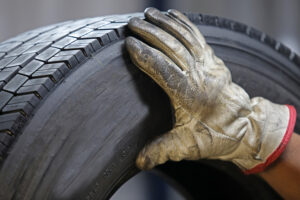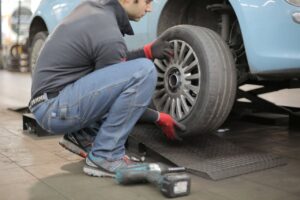4 Factors That Can Affect Your Stopping Distance
There is a multitude of conditions that could affect your vehicle’s stopping distance. The total distance a motorist travels before brakes are applied, plus the distance that you would travel whilst the brake slow the vehicle down.
Speed
The time it would take you to come to a halt isn’t just calculated by the time it takes you to press your brake pedal. In fact, speed plays a massive part in what determines the Highway Code braking distance. The brakes of your car can only decelerate by a certain amount per second. This means the faster you’re driving, the longer it will take you to stop.
At 30 mph, the braking distance is around 14 metres. However, by the time you’re driving at 70 mph, your braking distance would jump to a huge 75 metres (almost as long as a London bus).
View of the Road
Bad weather will affect the ability of your tyres to grip the road sufficiently. This can also be worsened by poor visibility, which makes reaction speed slower too. Visibility is one of the countless factors that will inhibit your thinking distance. This is because the longer it takes you to spot hazards on the road, the more time will pass by before you are able to hit the brake pedal.
Having a dirty windscreen will restrict your view of the road too. Therefore, it’s vital that you are continually topping up with windscreen wash and that your wipers are fully functioning. Likewise, having damaged wipers will reduce your visibility even further as they would smear dirt across your field of vision.
Moreover, whilst driving, it’s also important that motorists do not use mobile phones or a satnav. This would steal their attention from the view of the road ahead. This would reduce thinking time, diverting attention from any hazards that may have been placed on the road. Always ensure that music, mobile phones and other distractions are put away to provide a better and safer driving experience.
Weather
Your stopping distance in the rain may be longer when roads are wet. This can even make your braking distance jump by double in wet conditions. Moreover, wet brakes can be less effective. Therefore, when it rains, ensure that you are using your brakes lightly but regularly so that they dry out.
Amidst the altering UK weather conditions, road conditions can have an adverse impact on your overall stopping distance. Unlike other factors, the weather isn’t something we can control. Unfortunately, it can influence how your tyres are interacting with the road surface and there’s not much you can do about it.
Tread
The rule of thumb for the minimum legal tread depth is 1.6mm. However, it should be noted that the tread depth on your tyres can have a significant difference in your braking distance long before you actually reach this minimum.
Most tyre lives begin with around 8mm of tread. This eventually wears away the more they are in use. As your tyre tread begins to decline, as does the tyres’ ability to grip the road.
If your tyres show any sign of cracks, bulges or other damage, it’s crucial that you get them checked out by a professional. If not, check out our mobile fitting service, which offers to replace your tyres at home or work. You shop online and find the right tyres for you here. For any of our other blogs and tips on tyres, check out our official blog.




